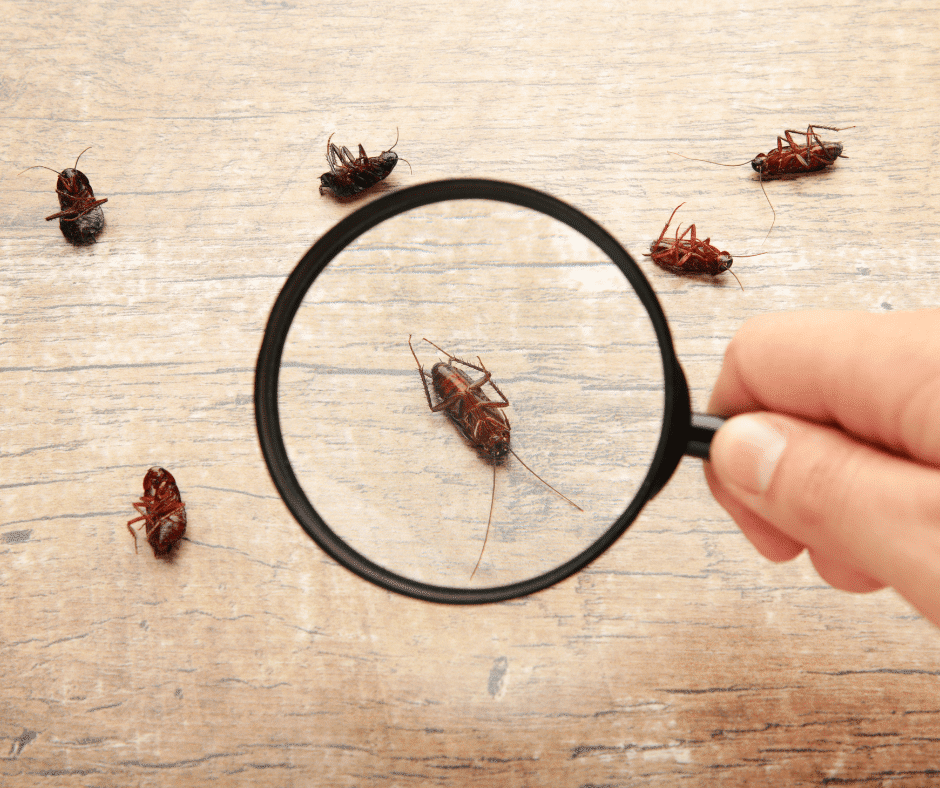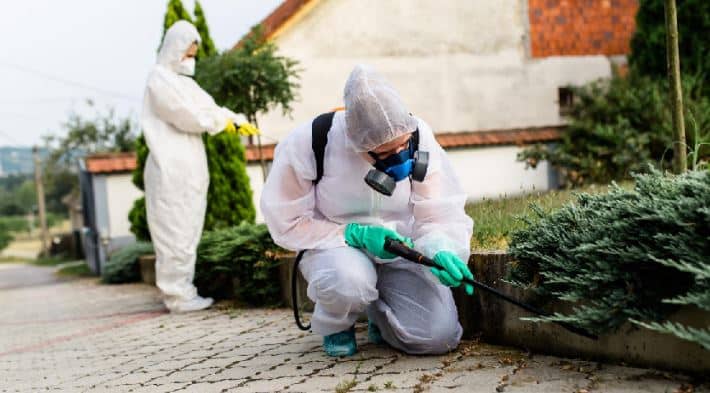What if you could transform your pest control strategies as the seasons change?
It might seem daunting to keep up with the shifting landscape of pests throughout the year, but with the right approach, you can effectively manage and protect your home. Let’s talk about how to adapt your pest control strategies to the changing seasons.
Understanding Pest Seasonality
Weather changes, seasonal patterns, and environmental factors influence pests. It’s essential to understand that different pests emerge during other times of the year. This seasonal behavior can significantly impact your control strategies.
Spring: The Awakening of Pests
As winter gives way to warmer temperatures, many insects awaken from their dormant state. Spring is typically when pests like ants, termites, and mosquitoes become active.
- Ants: Colonies emerge from the ground to search for food. You might notice ants scouting for sweet substances or proteins in your kitchen.
- Termites: Some species begin their swarming patterns during the warmer months. If you see winged insects around your home, it could be time for a professional inspection.
- Mosquitoes: These persistently irritating pests start breeding in standing water found in flowerpots, gutters, or puddles.
Start your spring pest control with preventive measures. Consider sealing entry points, clearing away debris, and addressing any moisture issues around your home to make it less welcoming to pests.
Summer: The Peak of Pest Activity
Summer brings the heat and, unfortunately, a peak in pest activity. During these warmer months, you may experience the highest volume of pest problems.
- Flies and Wasps: The warm weather promotes the presence of flies, while wasps become more aggressive as their colonies grow. Keeping food covered and disposing of waste correctly can help minimize these pests.
- Spiders: The summer warmth leads many spider species to roam for food. Regularly clearing away cobwebs and keeping clutter at bay can deter them.
- Ticks and Fleas: These bloodsucking pests thrive in warm, humid conditions. When spending time outdoors, be mindful of ticks and take preventive measures with pets to keep fleas at bay.
During summer, focus on active pest management. Monitor your surroundings, maintain cleanliness, and utilize traps or insecticides to reduce pest populations.
Fall: The Preparations for Winter
As temperatures drop, many pests start searching for warmth and food. Fall is a crucial time for pest control, as this is when many pests look for a cozy place to ride out the winter months.
- Rodents: Mice and rats seek shelter and food sources inside homes. Seal any cracks and declutter storage areas to reduce potential hiding spots.
- Ants: Some species, particularly carpenter ants, may try to get indoors before winter. Placing bait traps around entry points can help reduce their numbers.
- Stink Bugs and Boxelder Bugs: These pests seek refuge in homes as colder weather sets in. You may notice them gathering on sunny exterior walls.
In the fall, take the initiative to inspect your home thoroughly. Look for gaps or entry points, and take the necessary steps to prevent pests from making your space their own.
Winter: The Dormant Yet Dangerous Season
While many pests enter a dormant state during winter, some may still threaten your home. Even if pest activity seems to have slowed down, this season requires vigilance.
- Rodents: It’s important to remain cautious. Rodents can cause significant damage as they seek warmth indoors, often chewing through wiring and insulation.
- Termite Activity: While you may think termites are inactive, they can still cause damage throughout winter months. Regular inspections can help catch any activity early.
- Cockroaches: These resilient pests can survive in cold climates if they find a warm place to live, like your home. Take precautions to avoid infestations.
In winter, focus on prevention. Schedule a pest inspection, store food securely, and remove potential nesting materials. Being proactive can minimize the chances of dealing with household pests during the colder months.

Seasonal Pest Control Strategies
Now, let’s get into some actionable strategies for pest control explicitly tailored for each season.
Spring Pest Control Strategies
To combat the emergence of pests in spring, consider these strategies:
- Prevention: This is the time to audit your home for potential pest entry points: seal cracks, repair weather stripping, and screen windows and vents.
- Yard Work: Keep your landscaping tidy. Trim back overgrown plants and remove standing water to reduce mosquito breeding grounds.
- Bait Stations: Use bait stations for ants and cockroaches. You can place them strategically along known travel paths to catch pests early.
Summer Pest Control Strategies
As summer arrives, it’s essential to employ a variety of control techniques to manage increasing pest populations:
- Environmental Management: Remove excess standing water. Regularly change pet water dishes and clean gutters to reduce mosquito habitats.
- Traps: Set up bug traps for flies and wasps around entrances and food areas to quell their populations.
- Natural Repellents: Consider using natural repellents like citronella candles and peppermint oil to deter mosquitoes and other flying insects.
Fall Pest Control Strategies
With the arrival of cooler weather, here are some essential strategies to implement:
- Home Inspections: Inspect the exterior of your home for cracks and gaps. Pay special attention to utility lines and areas where pipes enter the house.
- Seal Entrances: Use caulk or steel wool to seal entry points, including spaces around windows, doors, and vents.
- Rodent Traps: Set up traps in basements and attics, especially in areas showing rodent activity.
Winter Pest Control Strategies
Though the cold may bring fewer pests, it’s important to stay vigilant during winter months:
- Regular Inspections: Consider a bi-monthly inspection of your home. This will help spot any early signs of pests attempting to nest indoors.
- Food Storage: Store food in airtight containers, focusing on pantry staples that could attract pests.
- Reduce Clutter: Declutter storage areas. Rodents love to nest in piles of old boxes and clothing.

Combining Organic and Chemical Control
As you implement these seasonal strategies, consider combining organic and chemical pest control methods. Each has its advantages and can work together for maximum effectiveness.
Organic Control Methods
- Essential Oils: Many essential oils, such as peppermint or tea tree oil, can naturally repel pests. Spray these oils around door frames and window screens.
- Diatomaceous Earth: This natural powder is effective against insects like ants and bed bugs. Sprinkle it in areas where these pests are frequent.
- Beneficial Insects: Introduce ladybugs and lacewings to combat pest populations without chemicals in your garden.
Chemical Control Methods
- Insecticides: When pests become overwhelming, insecticides may be necessary. Always choose products labeled for the specific pest you’re targeting, and follow application instructions closely.
- Baiting Systems: Modern baiting systems can attract and eliminate specific pests, such as termites or cockroaches, with minimal risk to your home and family.
- Professional Application: Sometimes, hiring a pest control professional is best. They have access to products and techniques not available to the general public.
By incorporating both strategies, you can create a comprehensive and adaptive plan for pest control throughout the year.
Long-Term Pest Management Tips
Beyond adapting your strategy for the seasons, practice long-term pest prevention. Here are some key insights:
Monitor and Document
Keeping records of pest sightings and control actions can provide insights into your home’s pest situation:
- Pest Activity Logs: Maintain a log of when you see certain pests, where you see them, and the actions taken.
- Seasonal Patterns: Over time, you may notice patterns in pest activity that help you predict and prepare for future infestations.
Educate Yourself and Your Family
Knowledge is power! Stay informed about common pests in your area:
- Recognize Pest Signs: Learn to identify signs of common pests—droppings, nests, and damage.
- Educate Family Members: Teach everyone in your household about pest prevention measures. This collective effort can significantly reduce pest problems.
Regular Maintenance
Incorporate routine maintenance into your home care:
- Landscaping: Trim plants away from the perimeter of your home and remove any dead foliage or debris that can attract pests.
- Declutter: Regularly declutter your home, particularly storage areas, to deny pests hiding places.

You’re now equipped with the knowledge to tackle pest control year-round effectively. Adapt your strategies based on the seasons, employing organic and chemical methods when necessary. With proactive measures, you can significantly minimize the chance of pests taking over your home.
Understanding the seasons and the pests within them prepares you to face challenges head-on. Each proactive step contributes to a pest-free environment where you and your loved ones feel comfortable and secure. Keep adapting, learning, and keeping your home pest-free throughout the year.
==========
Content 10/10/G
